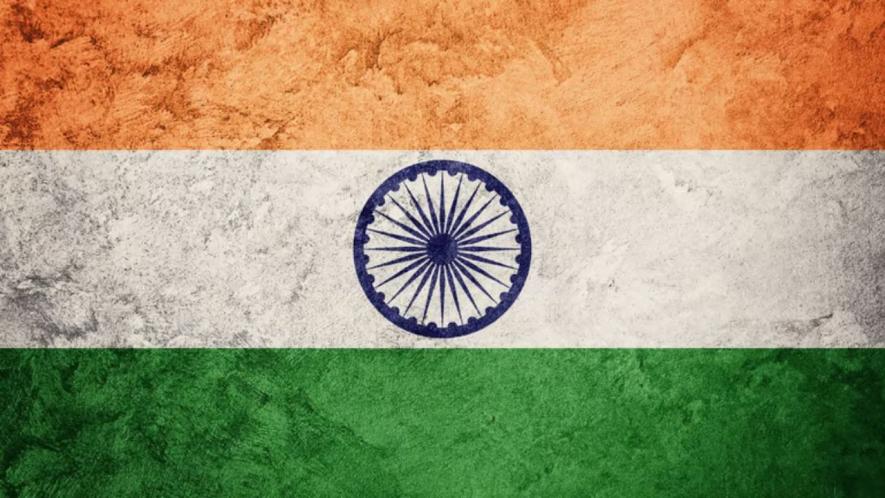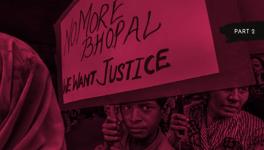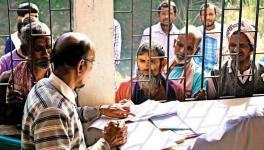Economic Aspects of ‘Republican Fraternity’ in India

The Supreme Court of India, in its latest judgment on the legality of Section 6A of the Citizenship Amendment Act, 1955 has raised the issue of ‘fraternity’.
In India, the concept of fraternity has a crucial link with important issues such as education, health and other social welfare schemes. The reason is that India is a very diverse country, with vast variations between regions, castes, communities, classes, genders, etc. Due to these variations, there are various levels and kinds of deprivation and inequalities. So, what does ‘fraternity’ mean in such a context?
Since the Indian republic has been built on a liberal framework, ‘fraternity’ must imply caring for each other and overcoming deprivations. This task has been imperfectly carried out since Independence and has led to growing conflict in society. Thus, to strengthen the nation, the idea of ‘fraternity’ needs to be taken more seriously.
Since the Indian republic has been built on a liberal framework, ‘fraternity’ must imply caring for each other and overcoming deprivations.
Definition and meaning
The Preamble of the Indian Constitution reads:
“…to secure to all its citizens:
JUSTICE, social, economic and political;
LIBERTY of thought, expression, belief, faith and worship
EQUALITY of status and of opportunity; and to promote among them all
FRATERNITY assuring the dignity of the individual and the unity and integrity of the Nation;”
‘Republican’ means where power is with the people or their elected representatives.
Fraternity means the feeling of commonness or fellowship among a group of people. The group could belong to a nation, a class, a religion, a region, a caste, a profession, etc.
Combining the two, ‘republican fraternity’ can be taken to stand for a ‘feeling of fellowship among a self-governing group of people who constitute a sovereign entity’.
This could refer to a global entity or a nation or a State or a local body. This does not rule out the sub-division of the group as a class, community, region, etc. Such divides in society immediately dent the feeling of commonness and fellowship among the members of the group.
In the Indian Constitution, fraternity follows the idea of equality and appears to be linked to it. Further, while the Preamble talks of securing for its citizens justice, liberty and equality, when it comes to fraternity, it is to be promoted among the citizens.
It then appears that fraternity stands on a slightly different plane than the other three. It is not pre-existing but has to be ‘cultivated’ among the citizens. The other three have to be secured for all citizens. The implication seems to be that these three are available and they only have to be secured to all citizens.
This is contestable since it is not that: a) Justice, liberty and equality are well-defined for all times, and b) They are available in different measures to citizens, and they need to be secured for those who have less of it.
In the Indian Constitution, fraternity follows the idea of equality and appears to be linked to it.
Further, fraternity is supposed to assure the dignity of the individual and bring about unity and integrity of the nation. The ‘dignity of an individual’ can only have a meaning in reference to a group. Similarly, ‘unity and integrity of the nation’ also refers to a group.
So, from an economic standpoint, to talk of ‘republican fraternity’, one has to refer to theories that talk of groups. I have not seen this idea directly used in economics literature. But when talking of groups one can think of possibly two different perspectives— the neo-classical social welfare framework and the political economy framework of economic development.
Neo-classical framework
There is an idea of ‘social welfare’ based on the notion of bringing together individuals in a society. This aggregation of individuals constitutes the society in which economic activity is carried on. The market, an institution for exchange, is supposed to lead to an optimum— the best that is possible for the community.
This could conceivably be referred to as ‘fraternity’— how to live together, produce and exchange among all, to collectively arrive at the best possible situation.
What is it that is optimised? A social welfare function that is made up of the individual utility functions of all the individuals constituting the collectivity. The utility functions are supposed to contain the preferences of the individuals including those for equity in society.
Different individuals have different notions of how much equity they want in society. It is the social welfare function that contains the combined preference of all individuals about how much equity should prevail in society.
The social welfare function is maximised to achieve the social optimum. If there was no social welfare function, there would be no notion of equity. The optimum arrived at purely through exchange would be consistent with extreme inequality where one would have all while the other would have none.
This is referred to as ‘allocative efficiency’, but it would not have the needed fellow feeling in the group and would clearly not produce a fraternal feeling in society.
Unfortunately, the social welfare function is a purely theoretical construct since it is defined ‘in principle’ mathematically. It is a function of functions containing the preferences of individuals which are themselves hard to capture. How can individual preferences be captured? These are highly subjective and unlikely to be fixed for all times.
Fraternity is supposed to assure the dignity of the individual and bring about unity and integrity of the nation.
So, the exercise of social welfare maximisation is purely theoretical. What is the theoretical result it throws up? To achieve it, a government is required, which will have to implement a theoretical device called ‘lump sum taxes’. These change the distribution of initial endowments in society prior to exchange taking place in the economy. So, equity is established prior to the exchange taking place in the market. These taxes are called non-distorting from the market standpoint.
Lump sum taxes are purely theoretical. None of the existing taxes— direct or indirect— are lump sum taxes. All actual taxes used in society are distorting taxes— they distort the optimum. So, in any realistic existing situation, the social welfare optimum cannot be reached. That is, any distortion leads to a loss of social welfare.
Why are real taxes distorting? They drive a wedge between prices received by the producers and the prices paid by the individuals. So, technically the marginals cannot be equated as is required by the theoretical condition for optimisation.
Further complications follow. Without any distortion, a unique optimum can be found, called the ‘first best’. But due to the distortions, only a ‘second best’ can be reached. But there is no unique solution in this latter case.
Further complications arise in real-life situations since there are many ways in which the market fails and thereby creates distortions. Situations of market failures are, merit want, public good, increasing returns to scale, externalities, asymmetric information, etc. So, there are as many situations of optimality as the number of ways markets get distorted.
In brief, the first best with a unique social welfare optimum is hypothetical while the real-life situations are distorting and there are as many optima as the number of distortions.
In the former case, one can think of society arriving at a situation of ‘fraternity’ but not in the latter case, where this idea will be relative.
There is an idea of ‘social welfare’ based on the notion of bringing together individuals in a society.
Finally, neo-classical theory accepts that equity in society requires government intervention but only lip service is paid to it since it is hard to achieve. So, it only concerns itself with ‘allocative efficiency’ achieved through the functioning of the markets. Further, there is concern only with equity and not equality and that too it does not try to achieve because it does not want government intervention.
So, not only is the notion of ‘fraternity’ not a part of the neo-classical theory but it can be taken to be relative to the economic situation. Further, markets follow the principles— ‘dollar vote’, ‘more is better’, ‘rational individuals maximising their profit’, ‘homoeconomicus’ and ‘consumer sovereignty’.
These principles result in atomisation and dilution of the sense of equity and equality in society and drive society away from the notion of ‘fraternity’.
Political economy framework
The inherent limitation of the neo-classical framework to conceptualise the idea of ‘fraternity’ leads one to explore the framework of political economy and development literature to explore how the idea of ‘fraternity’ may be formulated.
But before delving into it, it should be admitted that the neo-classical framework has had a substantial impact in changing social philosophy even though admittedly it does not work in actual practice. It has strongly resulted in the promotion of consumerism, a retreat of government from the economy and ‘market-friendly State intervention’.
In the political economy framework, what society chooses to do is determined politically. So the notion of ‘fraternity’ is linked to societal dynamics and processes. These are determined by whether society is capitalist or socialist or feudal and whether the government is democratic or authoritarian.
So, unlike in the neo-classical framework where all are individuals, in the political economy framework there are different kinds of individuals. There is no homogeneity. Society is constituted of distinct groups depending on their place in the process of production. There are landlords and serfs in a feudal society.
Capital and labour are the distinct groups in a capitalist society. These class divisions in society are conceived at the highest level of abstraction. As one moves from them towards reality, one encounters further sub-division. So, the notion of ‘Fraternity’ becomes relative— within the groups and sub-groups.
The division of society into groups and sub-groups leads to conflict among them. So, one confronts the difficulty of defining fraternity within and across groups. ‘Fraternity’ should imply concern for each other’s welfare but that is not consistent with capitalism or feudalism where class interests clash.
Not only is the notion of ‘fraternity’ not a part of the neo-classical theory but it can be taken to be relative to the economic situation.
Can capitalists be ‘trustees’ in the sense M.K. Gandhi thought of them— can they be benign? Given the profit motive, that is unlikely. The drive for a higher profit share is at the expense of the wage share. Given technological change, a higher real wage can be consistent with a lower share of wages in the output. It is the latter that determines the extent of inequality.
High and growing inequality undermines ‘fraternity’ because it leads to a growing contrast in the living standards of different groups. This accentuates the divide and conflict in society which are also aggravated by the ongoing environmental destruction and marketisation.
Climate change following environmental degradation impacts the marginalised sections disproportionately more. Marketisation, based on the ‘dollar vote’, further marginalises the marginals. The result of all these factors acting together is to undermine fraternal feeling across different groups since each of them tries to maximise its own welfare, often at the expense of the others.
In India, the various dimensions of inequality are linked to the existing sub-divisions in society— rural–urban, organised–unorganised, agriculture–non agriculture, regional, caste divides, and community and gender divide.
Government policy can either mitigate or aggravate these divides. Usually, policy is formulated by the dominant power for its own benefit— presently the capitalists. In India, this class has promoted policies favouring the well-off and not the marginalised by promoting the organised sector, urban sector, non-agriculture and big business.
Data is manipulated to hide reality. In India, the marginals are invisibilised in both data and policy. Since the government and big business dominate the media, the public does not get to know the real picture of the marginalised sections.
For instance, the government keeps claiming that the marginalised are better off while the marginalised do not feel that way and are not able to contest the government’s narrative since no alternative data is available. The marginalised complain of growing unemployment and price rise, both of which reduce their purchasing power. So, real incomes decline and poverty persists.
The gains of development since Independence have been captured by the well-off, leaving little for the marginalised. So, the latter are unable to fulfill their aspirations and that leads to frustration and alienation and a decline in the fraternal feeling in society.
Capital and labour are the distinct groups in a capitalist society. These class divisions in society are conceived at the highest level of abstraction.
To mask the reality of dichotomous development, the rulers use every possible division in society to capture power. This undermines any residual fraternal feeling in society. Not only is the attention of the marginalised diverted by the aggravation of the social divide, the capitalist class is able to hegemonise the thinking of the marginalised groups.
The marginalised are made to believe that their welfare lies in the capitalist system and that there is no alternative (TINA). This has been particularly so in India since 1991 because of the balance of payment crisis, the collapse of the Soviet Bloc and the earlier 180-degree turn in China after Mao Zedong’s death in the mid-1970s.
The global strategic shifts strengthened international finance capital and its global domination. India increasingly came under its grip since the mid-1970s with the launch of the Emergency and a rightward drift in Indian politics.
The hold strengthened after the launch of the New Economic Policies (NEP) in 1991. These powers realise that their policies promote inequality and the persistence of poverty among the marginals.
So, they have propagated the ‘safety net’ idea since the late 1980s. India also implemented safety nets post 2005 with the granting of the right to work, food and education. This helps prevent a social explosion but is not a solution to the basic problem of inequality and unemployment.
So, the safety nets are palliatives and not a solution to the problems of unemployment, lack of adequate demand and slowdown in the economy. The result is that the capitalist crisis of demand aggravates and accentuates the basic conflict and reduces the fellow feeling in society.
To overcome this challenge, the institutions of global capital have proposed universal basic income (UBI) from 2015. This is an admission of the failure of capitalism to tackle its basic problem. After all, UBI goes against the basic principle of capitalism that ‘you pay for work done and not for work not done’. It is due to this principle that subsidies are called market distorting and frowned upon.
In India, while there is no UBI, free goods are being provided— called ‘freebies’. This is being done instead of providing long-term support to the poor via welfare schemes of health and education and investment in their infrastructure.
This is causing a fiscal problem, ceteris paribus. It does not solve the problem of growing unemployment which is at the root of the persisting poverty. The current policies with a focus on promoting the organised sector at the expense of the unorganised sector are leading to greater political, social and economic instability and reducing the fraternal feelings among the people.
In the neo-classical framework, only lip service is paid to the notion of equity.
Conclusion
Fraternity, as enshrined in the Indian Constitution, has to be referred to as ‘republican fraternity’ since it refers to the nation as the group that has accepted to be a republic.
Its economic interpretation has been the subject of this paper. Group as a collectivity is referred to both in the neo-classical framework and the political economy of development literature.
The former defines society as consisting of individuals who are similar and only their endowments and preferences differ. There is homogenisation. It talks of markets leading to efficiency— defined as the optimum situation for all individuals. But the markets by themselves undermine fraternity since they depend on the principles of ‘dollar vote’, rational individuals maximising their welfare, ‘more is better’, etc.
All of them together result in atomisation and weakening of the collectivity. This framework is consistent with extreme inequality which goes against the grain of fellow feeling in society.
To overcome this lacuna, the social welfare function is introduced and its optimisation is supposed to lead to equity. But it can only be achieved by the action of the government— an idea that is not liked by the proponents of this framework.
Further, even if the government is used to reach optimality, it requires policy instruments that are not available. So, in the neo-classical framework, only lip service is paid to the notion of equity. In reality, when these policies are implemented, they lead to greater inequality and marginalisation of the marginal. All this goes against the idea of fraternity.
This framework strongly promotes individualism and that has deeply penetrated societal consciousness which undermines fraternity. The political economy framework offers a deeper insight into the societal dynamics since it talks of groups and sub-groups.
All people are not alike— there are classes based on differences in their place in the process of production which defines their economic interests. There is a fellow feeling within groups but across groups there is conflict and that comes in the way of developing fraternal feelings in society. This is a more robust picture of why fraternity is weak and what needs to be done to strengthen it.
In brief, instead of fulfilling the constitutional promise of promoting among the citizens' fraternity and assuring the dignity of the individual and the unity and integrity of the nation, the opposite is happening in India due to growing conflict and atomisation in society. The result is growing strife in society that is undermining fraternity
A version of this piece was delivered as the keynote address at the anniversaries of ISS and CMF on October 8, 2024.
Get the latest reports & analysis with people's perspective on Protests, movements & deep analytical videos, discussions of the current affairs in your Telegram app. Subscribe to NewsClick's Telegram channel & get Real-Time updates on stories, as they get published on our website.
























